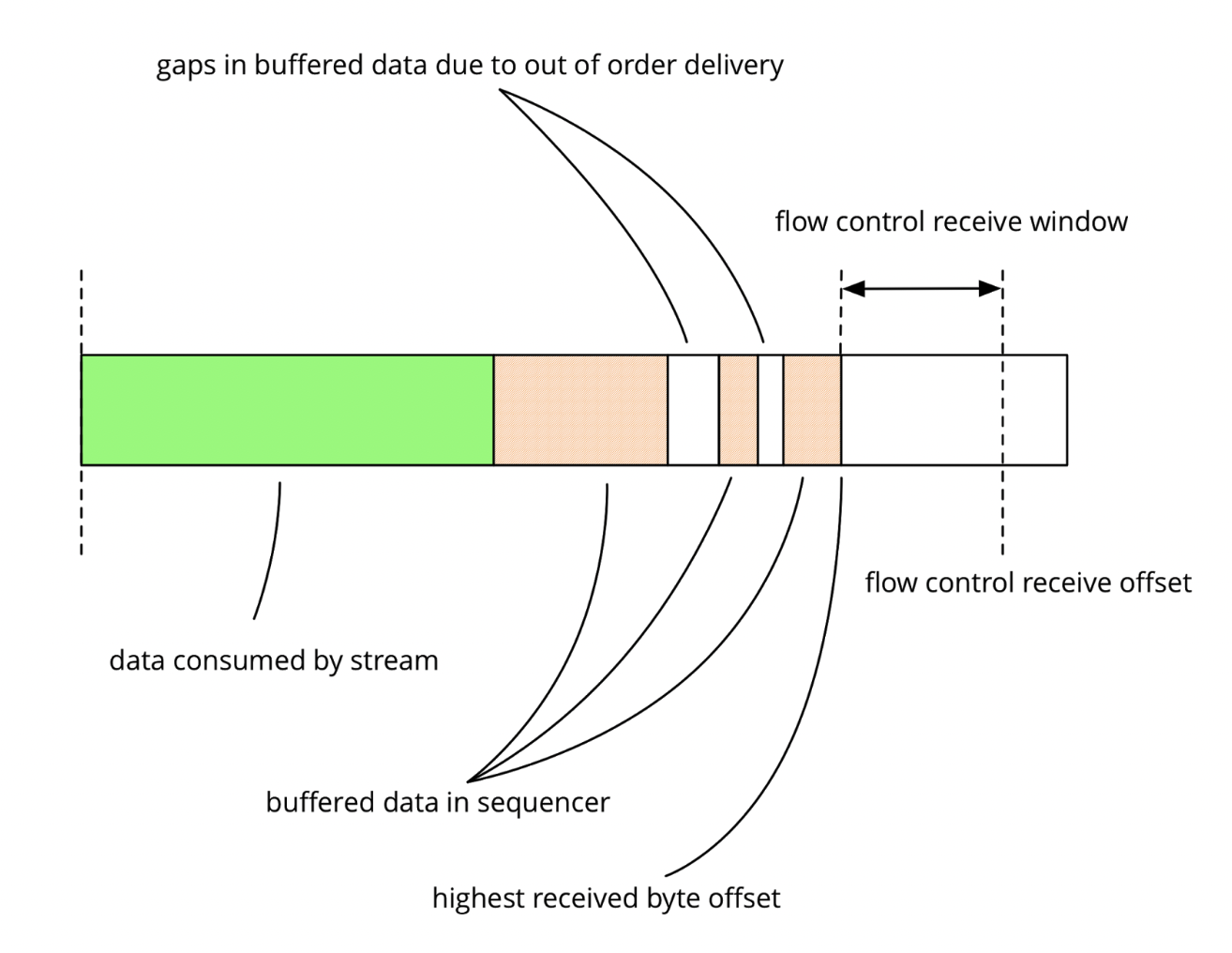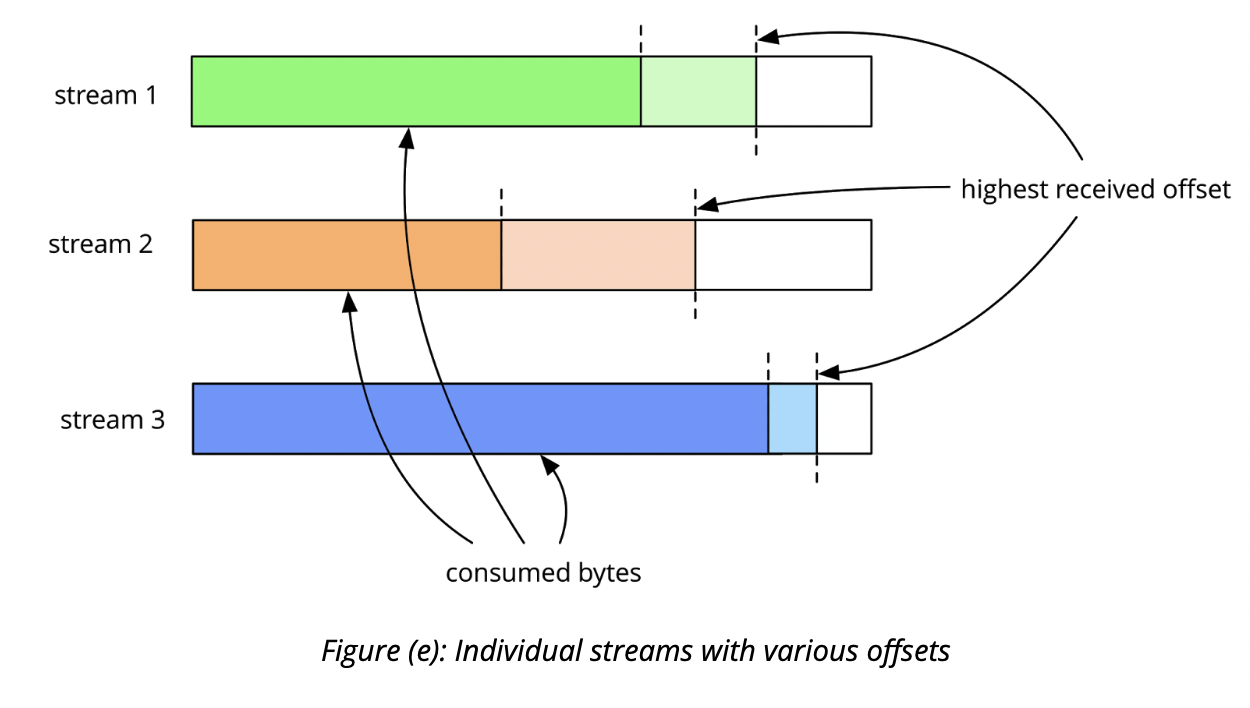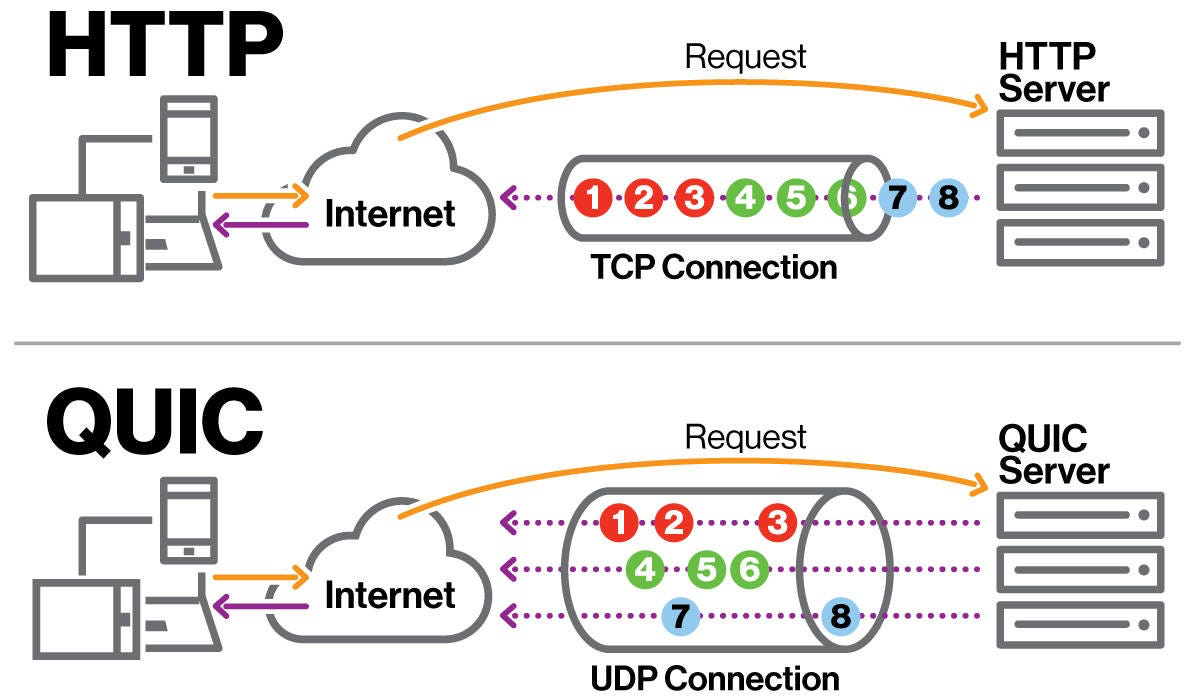QUIC: Revolutionizing Internet Protocols
The internet is a dynamic entity, continuously evolving to meet the growing demands for speed, security, and efficiency. Among the latest advancements is QUIC (Quick UDP Internet Connections), a transport layer protocol developed by Google and now a key component of HTTP/3. QUIC promises to revolutionize web communication by addressing the limitations of TCP and enhancing performance. Let’s dive deep into what makes QUIC a game-changer for the internet.
The Limitations of TCP
Transmission Control Protocol (TCP) has been the backbone of internet communication since the early days. While reliable and well-understood, TCP has several limitations:
- Connection Establishment: TCP requires a three-way handshake to establish a connection, introducing latency before data transmission can begin.
- Head-of-Line Blocking: In TCP, if a single packet is lost, subsequent packets must wait for the lost packet to be retransmitted, causing delays.
- Separate Security Layer: TCP relies on TLS (Transport Layer Security) for encryption, adding an additional layer of complexity and potential latency.
These limitations have become more pronounced as the internet’s usage patterns and performance expectations have evolved, leading to the development of QUIC.
QUIC: The Basics
QUIC is a transport protocol built on top of UDP (User Datagram Protocol). Unlike TCP, which is connection-oriented, UDP is a connectionless protocol, allowing for faster data transmission. QUIC takes advantage of UDP’s simplicity while adding mechanisms to ensure reliability, security, and performance.
Key Features of QUIC:
-
Reduced Connection Latency:
- Zero-RTT Connection Establishment: QUIC combines the transport and security handshakes, allowing data to be transmitted during the initial connection setup. This can significantly reduce latency, particularly for repeat connections.
- 1-RTT Handshake: For new connections, QUIC requires only a single round-trip time (RTT) for the handshake, compared to TCP’s three-way handshake.
-
Built-in Security:
- Integrated Encryption: QUIC incorporates TLS 1.3 directly into the protocol, ensuring all connections are encrypted from the outset. This integration simplifies the protocol stack and enhances security.
-
Improved Multiplexing:
- Stream-Based Multiplexing: QUIC allows multiple streams to be multiplexed over a single connection without head-of-line blocking. Each stream is independent, so packet loss in one stream doesn’t affect others.
-
Robust Error Correction:
- Forward Error Correction (FEC): QUIC can use FEC to recover from packet loss without waiting for retransmissions, further reducing latency.
- Selective Retransmission: QUIC retransmits only lost packets, rather than entire segments, improving efficiency.
-
Connection Migration:
- Seamless Mobility: QUIC connections are identified by unique connection IDs rather than IP addresses. This allows connections to survive changes in network conditions, such as switching from Wi-Fi to mobile data, without interruption.
Flow Control in QUIC
Flow control is crucial in any transport protocol to manage the amount of data that can be sent and received, preventing a fast sender from overwhelming a slow receiver. QUIC provides both stream and connection-level flow control, similar to HTTP/2, but with enhancements to ensure efficient and reliable data transfer.
Stream Flow Control:
- Mechanism: Each endpoint advertises the absolute byte offset in the stream it is willing to receive using WINDOW_UPDATE frames. For example, if an endpoint allows up to byte 200 on stream N and has received 150 bytes, it can receive 50 more bytes before it must block.
- Implementation: The receive window size is chosen independently by each endpoint based on available resources. For instance, a server with limited memory may set a smaller window to avoid allocating large buffers.
- Operation: As data is consumed from the stream, the endpoint sends a WINDOW_UPDATE frame to the peer, allowing more data to be sent. If a stream reaches its maximum receive window, the receiver will block additional data until it can process the buffered data.

Connection Flow Control:
- Mechanism: Connection flow control aggregates the flow control of all streams within a connection. This prevents a single slow stream from starving the entire connection of resources.
- Implementation: The connection-level flow control window is updated based on the aggregate data received and consumed across all streams. For example, if three streams have received and consumed varying amounts of data, the connection flow control state reflects the total bytes received and consumed.
- Operation: WINDOW_UPDATEs at the connection level ensure that other streams can progress even if one stream is blocked. This prevents a single stream from monopolizing the connection’s resources.


Other Considerations:
- RST Mid-Stream: If a stream is reset mid-stream, the final byte offset sent is included in the RST frame to keep both endpoints synchronized and maintain accurate flow control states.
- BLOCKED Frames: A QUIC endpoint sends a BLOCKED frame if it has data to send but is flow control blocked. These frames are useful for debugging and monitoring.
Default Values and Auto-Tuning:
- Default Values: Initial flow control window sizes vary but generally start with conservative values to ensure stability. For example, Chromium defaults to a stream receive window of 6 MB and a connection receive window of 15 MB.
- Auto-Tuning: QUIC can auto-tune the receive window size based on network conditions. The window size grows as necessary to match the bandwidth-delay product (BDP) but never decreases. The algorithm aims to maintain an optimal window size, large enough to encompass the BDP without being excessively large.
How QUIC Enhances Web Performance
The design of QUIC addresses many performance bottlenecks associated with TCP, making it particularly beneficial for modern web applications that demand low latency and high reliability.
Faster Page Loads: By reducing connection establishment time and eliminating head-of-line blocking, QUIC can significantly speed up page loads. This is especially important for mobile users and applications requiring rapid data exchange.
Enhanced Streaming: QUIC’s ability to handle multiple independent streams over a single connection makes it ideal for media streaming, where consistent and reliable delivery of data is crucial.
Improved Gaming and Real-Time Applications: For online gaming and real-time applications, low latency is essential. QUIC’s reduced handshake times and efficient handling of packet loss provide a smoother and more responsive experience.
Adoption and Future Prospects
Since its introduction, QUIC has seen rapid adoption by major web services and browsers. Google has implemented QUIC in its services, including Google Search and YouTube, and major browsers like Chrome, Firefox, and Edge support QUIC.
As HTTP/3 adoption grows, QUIC is poised to become the standard for web communication, offering substantial improvements over TCP. The ongoing development and refinement of QUIC will likely lead to even more innovative applications, further enhancing the internet experience.
Conclusion
QUIC represents a significant leap forward in transport protocols, addressing the shortcomings of TCP and providing a foundation for faster, more reliable, and secure internet communication. By integrating transport and security, reducing latency, and improving error handling, QUIC is set to transform the web, making it more responsive and efficient. As the internet continues to evolve, QUIC stands out as a critical innovation, driving the next generation of digital experiences.
